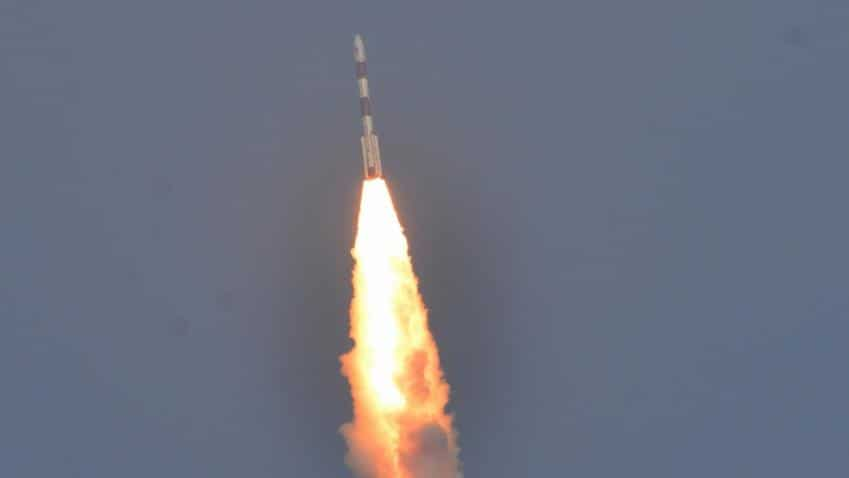ISRO plans SpaceX-type rocket recovery system for stages of launch
The stages constitute the bulk of a rocket's cost and a saving on that will reduce the launch cost.

The Indian space agency is planning to look at the possibility of reusing its rocket stages after a launch by making them re-enter atmosphere and land at a specified location, a senior official said.
"We are also looking at that programme," K.Sivan, director, Vikram Sarabhai Space Centre (VSSC) told IANS on the phone from Sriharikota in Andhra Pradesh.
The VSSC is a division of Indian Space Research Organisation (ISRO).
Referring to US-based aerospace company SpaceX's attempts in this regard, Sivan said ISRO too is planning like that.
SpaceX, with its two rockets - Falcon 9 and Falcon Heavy - offers satellite launch services.
A rocket stage comprises the engine, fuel and other systems.
The stages constitute the bulk of a rocket's cost and a saving on that will reduce the launch cost.
For instance, India's polar satellite launch vehicle (PSLV) is a four-stage rocket. It also has six booster engines strapped on the first stage.
The rocket is an expendable one, that is, nothing is recovered once it is launched.
So, recovering for instance the first PSLV stage means making it re-enter the atmosphere safely after it puts the other three stages up.
The outer shell of the stage should have sufficient heat-resistant materials. The stage should also be programmed to land at a specified location, preferably at the launch pad itself.
Sivan said recovery of the stage and using it again is completely different from the reusable launch vehicle (RLV).
He said developing a full-fledged RLV will take quite some time.
"We have to develop various technologies before finalising the specifications for our own RLV," Sivan said.
On May 23, ISRO successfully took the first step in developing a RLV by successfully testing an aircraft like winged structure.
Called RLV-Technology Demonstrator HEX 01 mission, the winged structure which sat atop a rocket was released into the space at above 70km from the earth.
The winged structure returned and landed in the Bay of Bengal as originally planned.
However, the future of India`s RLV depends on factors like its economic viability as compared to conventional expendable rockets; development of a powerful engine/stage to power that vehicle and also availability of funding for the project.
Meanwhile, ISRO will soon be testing its air breathing engine.
Air-breathing engines use atmospheric oxygen and burn it with the stored on-board fuel to generate the onward thrust.
Conventional rockets carry both oxygen and chemical fuel on board.
"We will soon be testing - may be this June - our air breathing engine fitted to a sounding rocket," Sivan said.
03:21 PM IST






 Xiaomi to bring ISRO's NavIC technology to smartphone line-up
Xiaomi to bring ISRO's NavIC technology to smartphone line-up WATCH! ISRO PSLV-C47 successfully launches CARTOSAT-3 satellite, 13 US nano-satellites from Sriharikota
WATCH! ISRO PSLV-C47 successfully launches CARTOSAT-3 satellite, 13 US nano-satellites from Sriharikota India's heavy rocket 'Bahubali' gearing up for Moon
India's heavy rocket 'Bahubali' gearing up for Moon ISRO's GSAT-31 communication satellite launched successfully by Arianespace; Watch video
ISRO's GSAT-31 communication satellite launched successfully by Arianespace; Watch video ISRO recruitment 2019: Apply at isro.gov.in for Scientist/Engineer posts; Check last date
ISRO recruitment 2019: Apply at isro.gov.in for Scientist/Engineer posts; Check last date